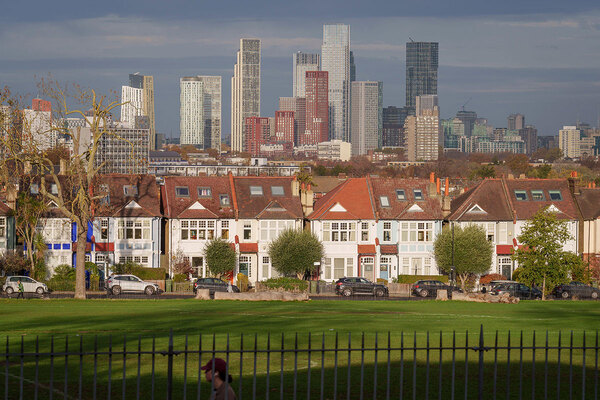The challenge of decarbonising council leisure centres
Steve Wilkinson, director of energy performance at Cenergist, says there are lessons to be learned from retrofitting these vital but carbon-heavy assets
Within decarbonisation strategies, there is always a focus on the benefits of projects beyond cutting carbon emissions on the path to net zero.
For example, organisations such as social housing providers explore delivering energy efficient housing through retrofits and newbuilds to futureproof residences and help protect households from the challenges associated with fuel poverty.
A similar opportunity lies with local authority leisure centres.
In terms of building-use, leisure centres hold significant community value, including support for health and wellbeing, social cohesion and cultural enrichment. For local authorities, they also present a source of revenue.
Leisure centres form a vital part of local authority building stock, Sport England state that the use of these sites is up but they are also under acute pressure.
According to the latest data from gym and leisure centre operator membership body, ukactive nearly 40 per cent of publicly operated leisure facilities are at risk of reducing services, lowering pool temperatures or closing entirely owing to higher energy costs.
This demonstrates why energy efficiency should be on the agenda for local authorities as they look to long-term plans to support operational expenditure shocks such as energy price volatility.
Leisure centres also represent “carbon hotspots”, so decarbonisation projects have the added benefit of unlocking extensive carbon savings.
Research by the District Councils Network shows that old and energy inefficient leisure facilities are responsible for contributing between 10 – 40 per cent of district councils’ direct carbon emissions. This demonstrates a clear opportunity for councils to make significant steps in their net zero roadmaps through leisure centres.
Providing support in this space is external funding sources such as the Public Sector Decarbonisation Scheme (PSDS), which provides grants to local authorities and public sector bodies towards retrofit projects.
The average value of the grants awarded is just over £2.5m per project and includes leisure centre projects.
Leisure centres have distinct characteristics when it comes to their energy use and daily operations, and it is important to factor these into decarbonisation strategies.
Reflecting on the opportunities and challenges this way throughout projects will ensure external funding is fully leveraged and projects are streamlined. It will also provide valuable lessons for other building types and their decarbonisation strategies.
Not a simple switch: energy challenges with leisure centres
Compared to other commercial and domestic buildings typically found in a local authority portfolio, leisure centres have significantly elevated energy demands.
This comes from areas such as higher indoor ambient temperatures and larger internal spaces such as pitches, courts and even ice rinks alongside shower and washroom facilities increasing further where there are “wet” facilities such as swimming pools.
Elevated energy demands are also seen in leisure centres which rely on fossil fuels, yet simply switching to a wholly electric system for heating and cooling can elevate costs, derailing project viability.
Leisure centre decarbonisation solutions need to be rounded in design and consider the contributions of different technologies to generate efficiencies and meet client goals.
Holistic decarbonisation solutions in practice
The starting point for a holistic approach is assessing the size, location and type of facilities offered, with each building assessed for its individual characteristics.
This will facilitate bespoke solutions. A stand-out example within leisure facilities is the provision of heating and cooling.
Here, there is the potential to design systems which recycle heat not being used effectively throughout the building, resulting in significant efficiencies.
When looking at heating sources, both ground source (GSHP) and air source heat pumps (ASHP) present viable alternatives, particularly for leisure centres which have a consistent heat load which rarely peak or trough.
Considering options means looking at characteristics such as available land clearance for GSHP boreholes. It also means analysing long-term cost projections.
For example, GSHPs may be more expensive to install initially, but they have a longer life cycle than an ASHP and can be cheaper to run, which over their lifetime, may make them more cost effective.
Another consideration behind a holistic approach is factoring in the increased energy demands from GSHP and ASHP. This can be addressed through on-site energy generation with solar PV in project schematics.
Unlocking the synergy between energy and water
There is a distinct relationship between tackling a building’s water waste and improving energy efficiency, which applies equally to leisure centres.
With any mains connection, water flow can be optimised with devices such as Control Flow with HL2024® technologies which mitigate naturally occurring fluctuations in mains water flow throughout the building. This results in significant reductions in water waste.
By optimising a building’s water use this way, the overall amount of water being heated is reduced, driving down energy demands further.
Project logistics: working in a live environment
Given the community function and benefits leisure centres provide, project plans need to ensure that this is not sacrificed as work progresses.
This means that the best time to undertake projects is during downtime or quieter periods. While this is straightforward in, for example, a school with holiday periods, leisure centres pose different challenges.
Many centres have earlier opening and later closing times and downtime can be harder to identify, reducing the available project windows to carry out work.
As a result, delivery partners need to have clear lines of communication between building managers and customers to identify optimal windows to carry out work while keeping disruption to a minimum.
The goal for any delivery partners is that no centre should have to fully close to carry out work, which is something we have a strong track record on at Cenergist.
Maximising funding potential
Surveys from Sport England showed how seven million participants at 563 leisure facilities in England in 2023/24 generated £891m in wider social value. This highlights how the community and economic impact of public leisure centres cannot be underestimated, and it is a priority for local authorities to ensure they are futureproofed.
Energy efficiency forms a key pillar in this space by helping weather energy price volatility and tackling carbon emissions, both of which will help preserve their community value.
External funding is vital to achieving this such as PSDS, and to unlock the full potential behind these grants, local authorities and their delivery partners need to embrace a holistic solution of energy efficiency technologies.
Specialised delivery partners who are technology agnostic can ensure agile plans which recognise the nuances of specific buildings.
This applies not only for leisure centres, but any commercial and domestic setting undergoing decarbonisation retrofits.



